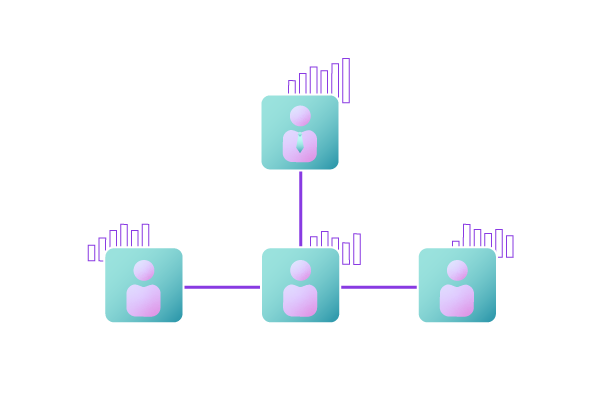
Welcome to the world of market making strategies! As we step into 2024, the financial landscape continues to evolve, and so do the strategies employed by market makers. Whether you’re a seasoned trader or a novice investor, understanding these strategies can provide valuable insights into the mechanics of the financial market.
In this article, we’ll delve into the intricacies of market making strategies, the role of market makers in different market structures, and some of the basic strategies that have stood the test of time. So, grab a cup of coffee and let’s embark on this exciting journey together!
What are Market Making Strategies?

Market making strategies are the tactics used by market makers to generate profits from the bid-ask spread. Market makers are financial institutions or individuals who buy and sell securities to ensure market liquidity. They quote both a buy and a sell price in a financial instrument or commodity, hoping to make a profit on the bid-offer spread.
The strategies employed by market makers are diverse and complex, often involving sophisticated algorithms and high-speed trading platforms. They must balance the need to make a profit with the risk of holding a large inventory of securities that could lose value.
Also Read: 3 Best Crypto Treasury Management Services 2024
In essence, market making strategies are about managing risk and seizing opportunities. They require a deep understanding of market dynamics, a keen eye for trends, and the ability to make quick decisions based on a multitude of factors.
Role of Market Makers in Different Market Structures

Market makers play a pivotal role in different market structures, ensuring liquidity and facilitating smooth trading. In a dealer market, for instance, market makers are the dealers who stand ready to buy or sell securities at any time, providing continuous bid and ask prices.
1. Dealer Market
In a dealer market, market makers act as dealers who are ready to buy or sell securities at any given time. They provide continuous bid and ask prices, ensuring that investors can always trade their securities. The market makers profit from the spread between the bid and ask prices. They play a crucial role in maintaining liquidity and reducing transaction costs in the dealer market. Examples of dealer markets include the foreign exchange market and the over-the-counter (OTC) markets for stocks and bonds.
2. Auction Market
In an auction market, also known as a double auction market, multiple buyers and sellers come together to trade securities. The New York Stock Exchange (NYSE) is a prime example of an auction market. Here, market makers, known as specialists, maintain a fair and orderly market by managing the auction process. They match buyers and sellers, and when there’s a temporary imbalance in supply and demand, they step in to buy or sell securities from their own inventory to maintain market liquidity.
3. Electronic Markets
With the advent of technology, electronic markets have become increasingly prevalent. In these markets, trading is conducted electronically, often through automated trading systems. Market makers in electronic markets use algorithms to provide liquidity. These algorithms quickly adjust bid and ask prices based on market conditions, ensuring that investors can always trade their securities. Electronic markets are known for their efficiency, speed, and reduced costs.
4. Over-The-Counter (OTC) Markets
OTC markets are decentralized markets where trading is done directly between two parties without the supervision of an exchange. In these markets, market makers act as intermediaries. They quote prices at which they will buy and sell a security, and when orders come in, they either match two customers together or sell from/buy into their own inventory to meet the demand. This ensures that trading can always take place, providing much-needed liquidity to the OTC markets.
Basic of Market Making Strategies and Techniques

Each of these strategies requires a deep understanding of market dynamics, a keen eye for trends, and the ability to make quick decisions based on a multitude of factors. They also require careful risk management, as market makers can face significant losses if the market moves against them.
Strategy 1: Bid-Ask Spread Strategy
This is the most fundamental strategy used by market makers. The bid-ask spread is the difference between the price at which a market maker is willing to buy a security (bid) and the price at which they are willing to sell it (ask). Market makers make their profit from this spread. For example, a market maker might buy a stock at $10.00 (the bid price) and sell it at $10.05 (the ask price), making a profit of $0.05 per share. The key to this strategy is maintaining a balance between the bid and ask prices to ensure a steady profit, while also managing the risk of holding securities that may fluctuate in value.
Strategy 2: Inventory Risk Strategy
In this strategy, market makers take on the risk of holding a certain amount of a security in their inventory with the expectation that they can sell it at a higher price in the future. This strategy requires careful risk management, as holding a large inventory of a security can lead to significant losses if the market moves in the wrong direction. Market makers must constantly monitor market conditions and adjust their inventory levels accordingly.
Also Read: Crypto Liquidity: An Overview and Importance
Strategy 3: Statistical Arbitrage Strategy
This strategy involves using complex mathematical models and high-speed computers to identify and exploit pricing inefficiencies in the market. Market makers using this strategy will typically hold a portfolio of securities and continuously monitor the market for opportunities to buy or sell these securities at prices that are out of line with their statistical models. This strategy requires significant computational resources and a deep understanding of statistical analysis.
Strategy 4: Customer Order Flow Strategy
Market makers often have access to valuable information about customer order flow, which they can use to their advantage. By analyzing the flow of customer orders, market makers can gain insights into potential market movements and adjust their trading strategies accordingly. For example, if a market maker sees a large number of buy orders for a particular security, they might anticipate an upward movement in the price and adjust their bid and ask prices accordingly.
Conclusion
Market making strategies are a fascinating aspect of the financial world, offering a glimpse into the inner workings of the market. As we move into 2024, these strategies continue to evolve, shaped by technological advancements, regulatory changes, and market dynamics.
Understanding these strategies can provide valuable insights for investors and traders alike. Whether you’re a market maker looking to refine your strategies or an investor seeking to understand the market better, we hope this article has provided you with some valuable insights. Here’s to a successful 2024 in the financial markets!
I'm Carina, a passionate crypto trader, analyst, and enthusiast. With years of experience in the thrilling world of cryptocurrency, I have dedicated my time to understanding the complexities and trends of this ever-evolving industry.
Through my expertise, I strive to empower individuals with the knowledge and tools they need to navigate the exciting realm of digital assets. Whether you're a seasoned investor or a curious beginner, I'm here to share valuable insights, practical tips, and comprehensive analyses to help you make informed decisions in the crypto space.
-
Carinahttps://quantmatter.com/author/carina/
-
Carinahttps://quantmatter.com/author/carina/
-
Carinahttps://quantmatter.com/author/carina/
-
Carinahttps://quantmatter.com/author/carina/

